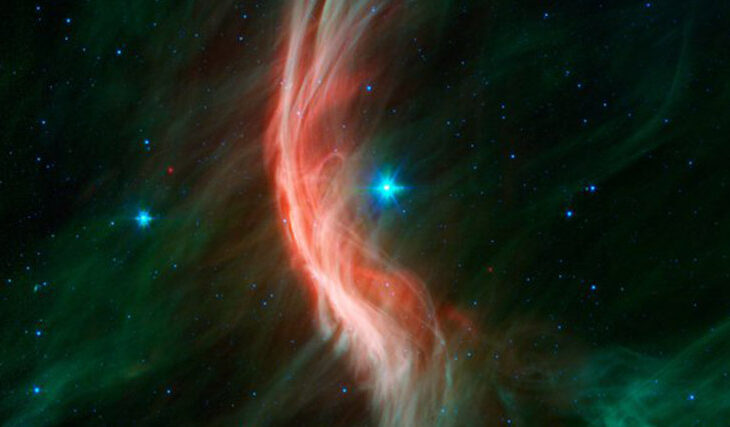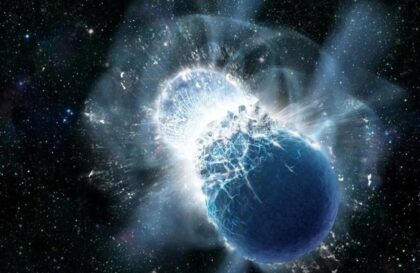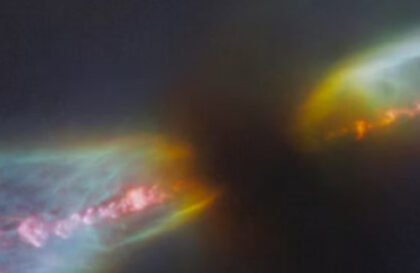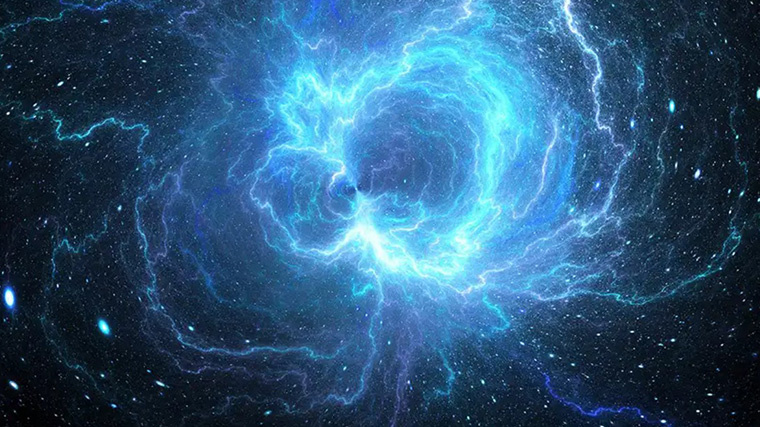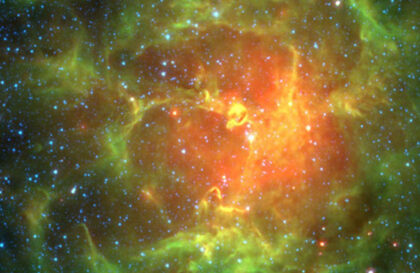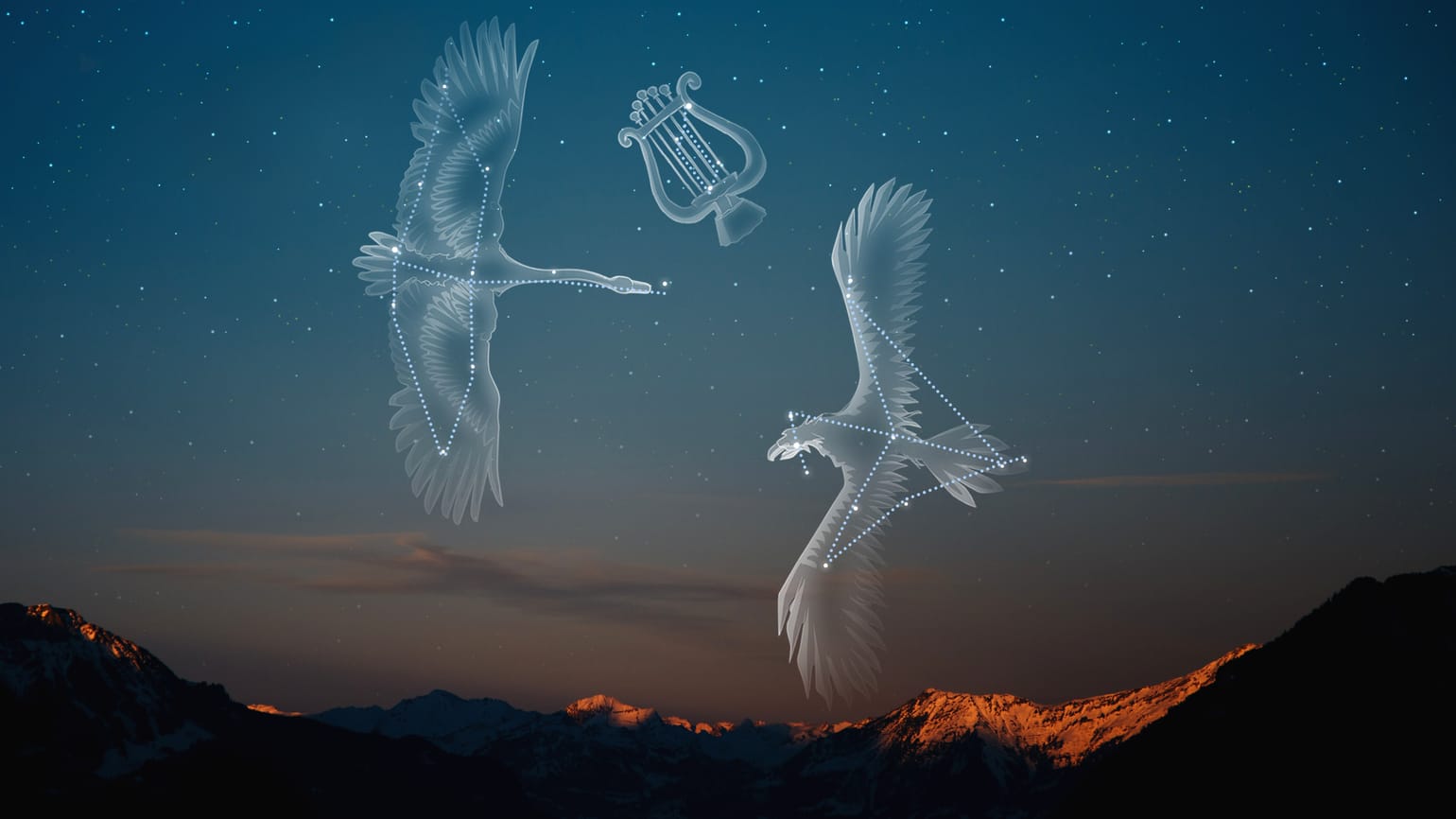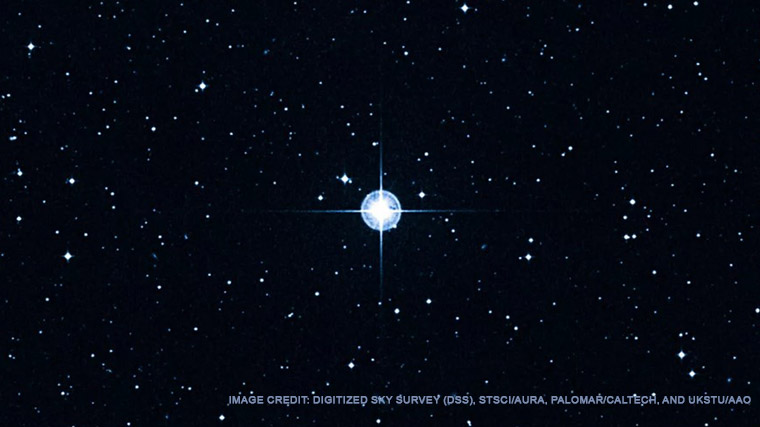This star, which weighs 20 times the mass of the Sun and is 80,000 times brighter, is hurtling through space at approximately 54,000 miles per hour, the equivalent of 24 kilometers per second.
Like a ship navigating its way through still waters, the massive star Zeta Ophiuchi cuts across the vastness of the Universe, sending shock waves through the interstellar dust along its path. Visible only in infrared light, the bow shock is created by winds emanating from the star, creating ripples in the surrounding dust.
An infrared image taken by NASA’s Spitzer Space Telescope shows these brilliant waves.
Scientists believe that Zeta Ophiuchi was previously part of a binary system along with an even larger star. However, after her satellite exploded as a supernova, she was pushed onto a high-speed trajectory.
Zeta Ophiuchi appears as a bright blue star in the center. It is located about 370 light-years from Earth, about six times hotter, eight times wider, 20 times more massive, and about 80,000 times brighter.
Crossing green-hued interstellar dust, powerful winds from the star blow this material into wave structures. In regions where these waves are most densely concentrated and heated, they acquire a reddish color. This phenomenon is similar to the disturbance of water in front of the bow of a ship skimming the surface of a body of water or to the accumulation of air in front of a supersonic aircraft, causing a sonic boom.
The Spitzer Space Telescope orbits the Sun just like Earth does. But Spitzer circles the Sun behind Earth by more than 50 million miles. Credit: NASA
Spitzer’s primary mission lasted five and a half years and ended when it ran out of the liquid helium coolant needed to operate two of its three instruments. However, the passively cooled design allowed part of the third device to continue operating. The mission was completed on January 30, 2020.
Banner image: The giant star Zeta Ophiuchi is having a “shocking” effect on the surrounding dust clouds in this infrared image from NASA’s Spitzer Space Telescope. Stellar winds flowing out from this fast-moving star are making ripples in the dust as it approaches, creating a bow shock seen as glowing gossamer threads, which, for this star, are only seen in infrared light. Credit: NASA/JPL-Caltech
Image credit:
https://www.jpl.nasa.gov
https://spaceplace.nasa.gov
